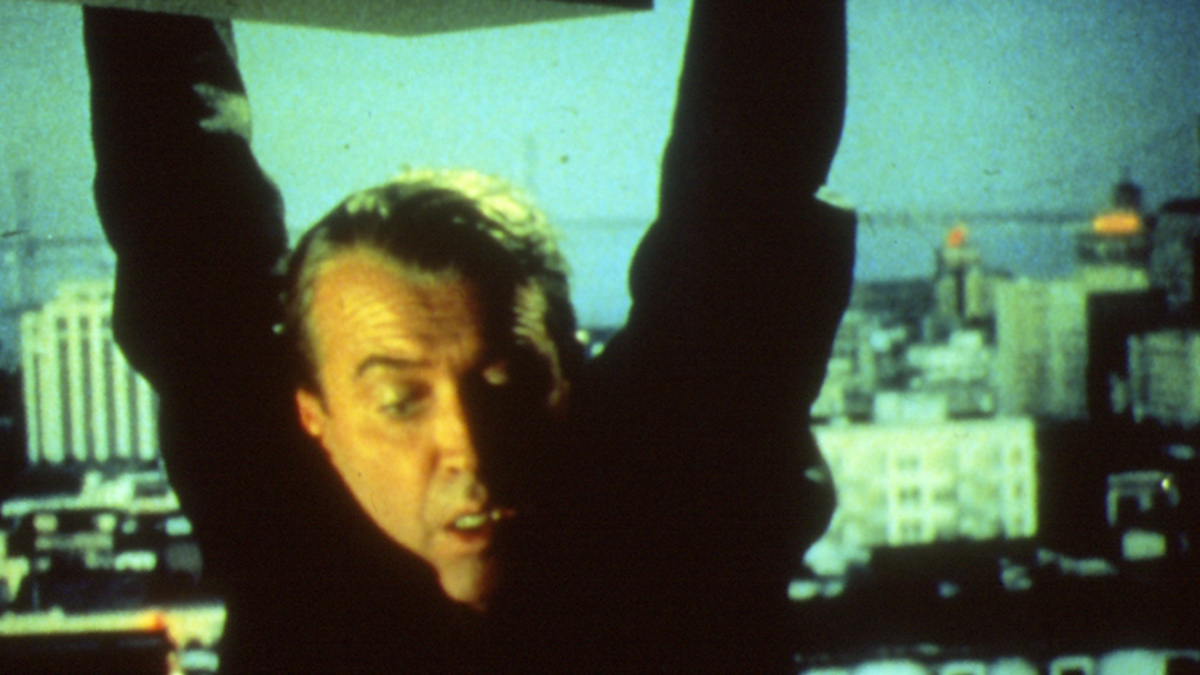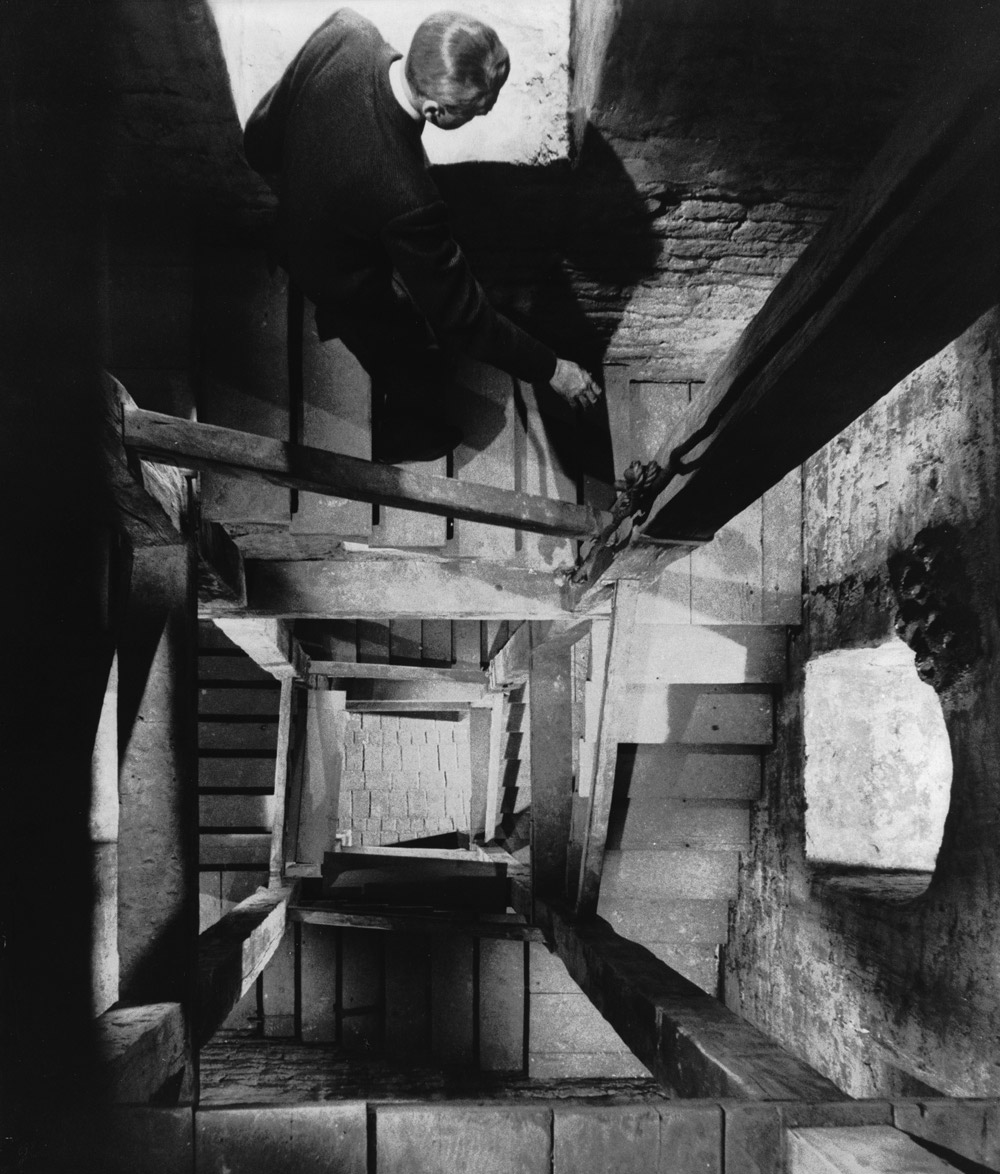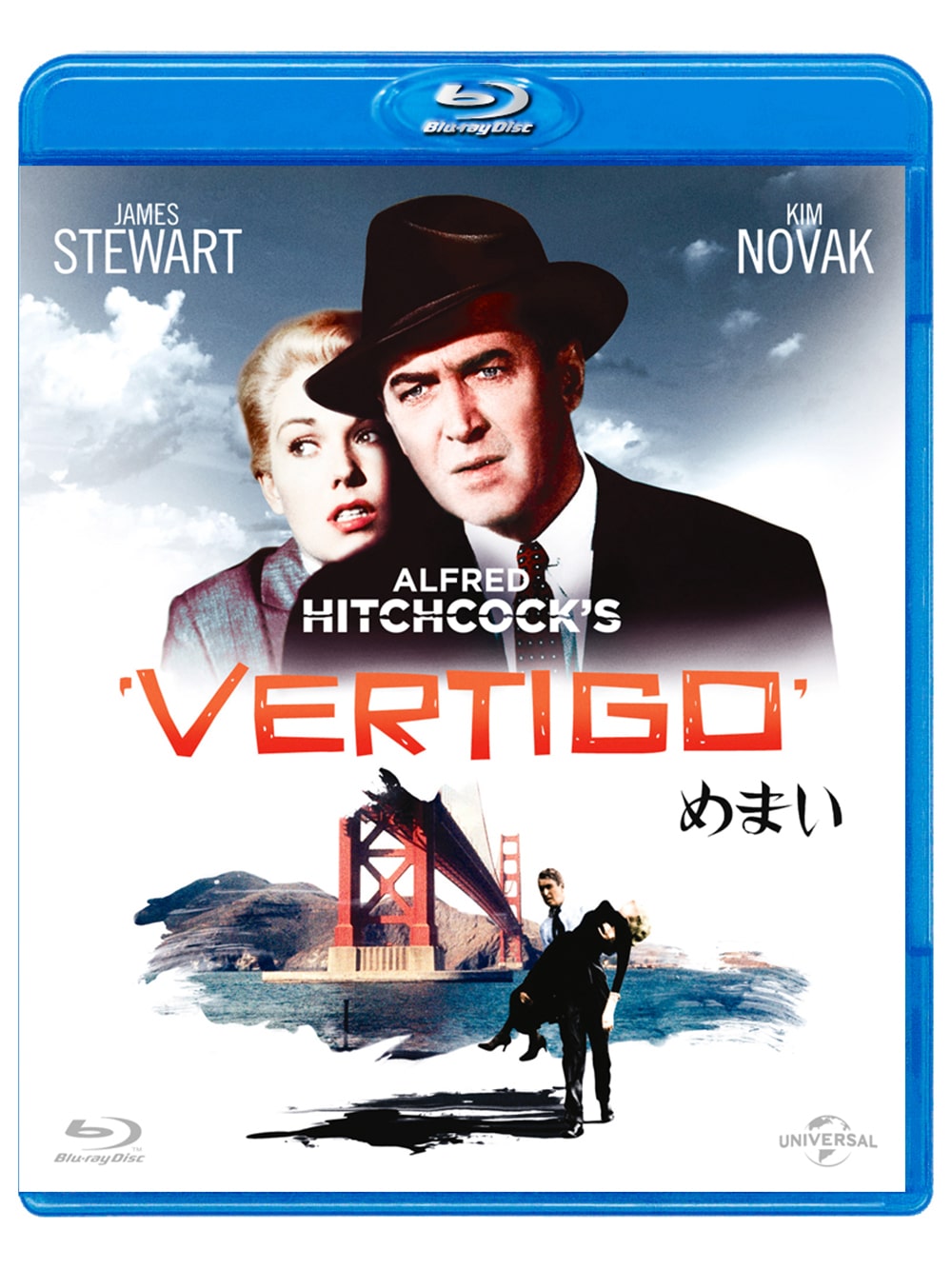
(c) Photofest / Getty Images
How was the legendary shot that symbolizes the title of Hitchcock's masterpiece ``Vertigo'' taken?
2019.10.14
How to express Vertigo visually? The secret behind the development of a revolutionary shot
It is because of these surprise shifts that we are able to get closer to James Stewart's psychology towards the end. Then, when the emotional dynamism reaches its maximum, the scene of the church bell tower appears, and the now legendary ``Vertigo'' shot appears.
The story is that when Stewart, who was climbing the bell tower, suddenly Vertigo down, he suddenly felt dizzy and the image became distorted, as if everything was moving away from him. This technique is now called ``dolly zoom'' and is frequently used in various video works.
In the book `` The Art of Cinema ,'' Truffaut asks, ``Didn't you make the camera track back and zoom in at the same time?'' and Hitchcock replies, ``That's right.'' So how did he come up with the idea for this ``Vertigo shot'' and decide to film it?
It all started at the Chelsea Arts Ball, a New Year's costume party that used to be held every year at the Royal Albert Hall. When Hitchcock took part in this frenzied and chaotic party, he became so excited that he became so drunk that he Vertigo dizzy, as if everything was moving away from him.
Chelsea Arts Ball footage
The symptoms of Vertigo that I experienced must have left a deep impression on me. He tried through trial and error to see if he could express this visually in his film `` Rebecca '' (40), which was released in the United States, but he could not come up with a good idea and gave up at that time. After thinking about it for about 15 years, he decided that by moving and zooming at the same time, he could capture the image he had in mind.
However, the challenge in ``Vertigo'' was that he was trying to use this technique in a vertical scene, ``looking down from above on a spiral staircase in a bell tower.'' According to a rough estimate, staff estimated that this would require as much as $50,000 to develop and install heavy equipment to move the camera vertically. However, here it is truly Hitchcock. ``Why did we need to do something so big for this scene?'' he asked the staff.

“Vertigo” (c)Getty Images
This is Hitchcock's argument. This scene is just a subjective image of the main character. In other words, as long as the spiral staircase of the bell tower is included as the subject, it is enough. There is no need for people to be reflected. So instead of using a full-size set, why not make a miniature spiral staircase? All you have to do is turn it sideways, set the camera in the normal position (horizontally as in normal dolly photography), and zoom in while tracking back.
I see, it was truly an eye-opener. Shooting a vertical image horizontally can be called a Copernican idea. In the end, what was supposed to cost $50,000 ended up costing just $20,000, and a legendary and iconic shot was captured on film that allowed audiences to relive the sensation of Vertigo. It makes me realize that watching Hitchcock movies is more than just an experience; it's an experience.
The more you know about the details, the more you will enjoy this work, and the more you chew it, the more you will understand it. The story is by no means straightforward, and it even has quite abnormal aspects. People may like it or dislike it, but those who are into it will be dangerously addicted to this scent. If you have never experienced it, why not step into this fantastic labyrinth at least once?
Reference materials
“ Vertigo ” DVD (Juneon Universal) Documentary
“ Standard Film Art Hitchcock/Truffaut ” François Truffaut/Koichi Yamada and Shigehiko Hasumi translation/1990/Shobunsha
Text: USHIZU ATSUNOBU
Born in Nagasaki in 1977. When he was 3 years old, he saw ``Superman II'' with his father and became fascinated with movies. After The Graduate from Meiji University, he worked for a movie broadcasting channel and then became a movie writer. Currently, in addition to writing for Eiga.com, EYESCREAM, Real Sound Movie Club, etc., he also contributes to media press and theater programs.

``Vertigo''
Blu-ray: 1,886 yen + tax / DVD: 1,429 yen + tax
Publisher: NBCUniversal Entertainment
(C) 1958 Alfred Hitchcock Productions, Inc. and Paramount Pictures Corporation. Renewed 1986 Universal Studios for Taylor and Patricia Hitchcock O'Connell as Co-Trustees. All Rights Reserved.
* Information as of October 2019.
(c)Getty Images

